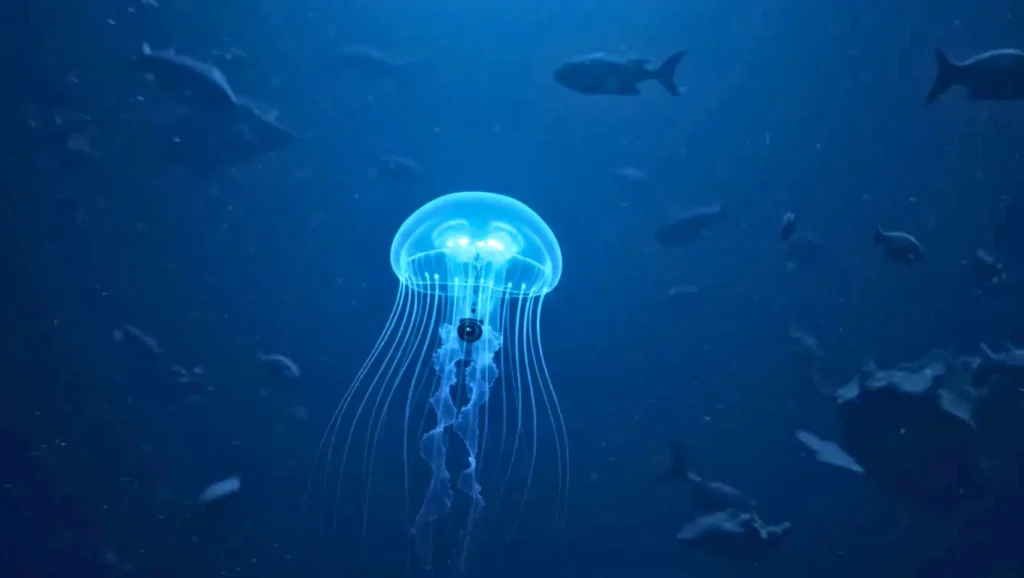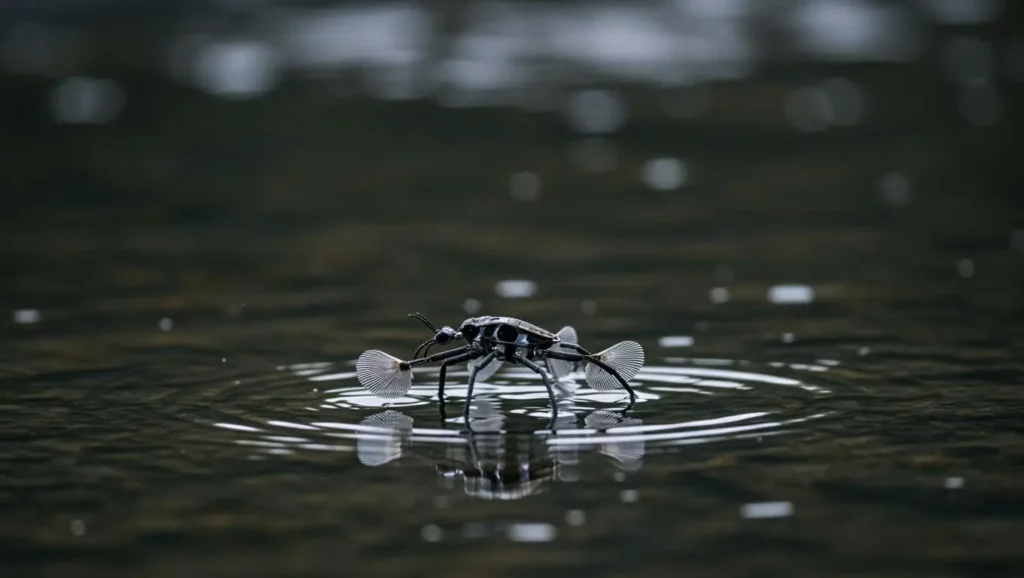Inspired by nature, this ultra-lightweight robot mimics the movements of a jellyfish. Discreet, precise, and nearly invisible, it could revolutionize underwater exploration… but also raise questions about the military use of biomimicry.
Copying Nature Leads to Faster, More Effective, and Often Eco-Friendly Innovation
Biomimicry is no longer just a trend; it has become a true driver of innovation. It refers to the practice of imitating the forms, behaviors, and strategies of living organisms to solve technical challenges. For instance, the aviation industry has drawn heavily from birds to develop airplane wings. The Velcro fastener, on the other hand, is inspired by the burdock plant’s seeds, which adhere to surfaces using tiny, natural hooks.
This principle also applies to the Japanese Shinkansen trains, whose streamlined shape mimics that of the kingfisher’s beak, significantly reducing noise pollution when entering tunnels. Then, there are self-cleaning surfaces inspired by the lotus leaf, which repels water and dirt. Today, the ocean depths are becoming the new frontier for this bio-inspired science.
This Jellyfish Robot Uses Nature’s Design to Explore the Ocean Quietly and Autonomously
The ocean is one of the most hostile environments for humans… and one of the least explored. To gain insights into this vast expanse, researchers are increasingly turning to biomimicry. This includes an American team that has created bionic jellyfish capable of collecting environmental data in the deep sea, where traditional devices often fail.
This idea inspired engineers at Northwestern Polytechnical University in Xi’an, China, who developed a jellyfish robot named the “underwater ghost”, measuring just 12 cm in diameter and weighing 56 grams. Despite its small size, it is equipped with a miniature camera, an artificial intelligence chip, and propulsion systems directly modeled after jellyfish. It’s a compact piece of technology that is as discreet as it is effective.
Agility and Energy Efficiency Make This Jellyfish Robot an Ideal Sentinel of the Deep Sea
The secret to its mobility lies in innovative electrohydraulic actuators paired with hydrogel electrodes, enabling it to faithfully reproduce the pulsating swimming motion of jellyfish. Its estimated energy consumption of only 28.5 milliwatts makes it an ideal exploration tool for long, silent missions.
This robot stands out due to its biomimetic design: a transparent body, flexible tentacles, and the ability to imitate neural signals that trigger natural movements. Using vortex ring propulsion, it moves with fluidity and agility, much like a living creature. All of this occurs in almost complete silence, making it particularly hard to detect underwater.
This Potential Underwater Spy Raises Scientific Hopes But Also Strategic Questions
Officially, the underwater ghost is designed for scientific missions: observing sensitive areas, ecological monitoring, and inspecting underwater infrastructures. Project lead Professor Kai Tao claims it could even be used to study fragile ecosystems without disturbing them.
However, its capabilities for camouflage, discretion, and adaptability could also attract interest from other spheres. In a context of increasing geopolitical tensions, this type of robot could be used for covert spying or even for missions in hostile waters. One downside is that this nearly perfect imitation of a jellyfish also attracts its natural predators, such as turtles—a risk to consider for any long-term usage.




